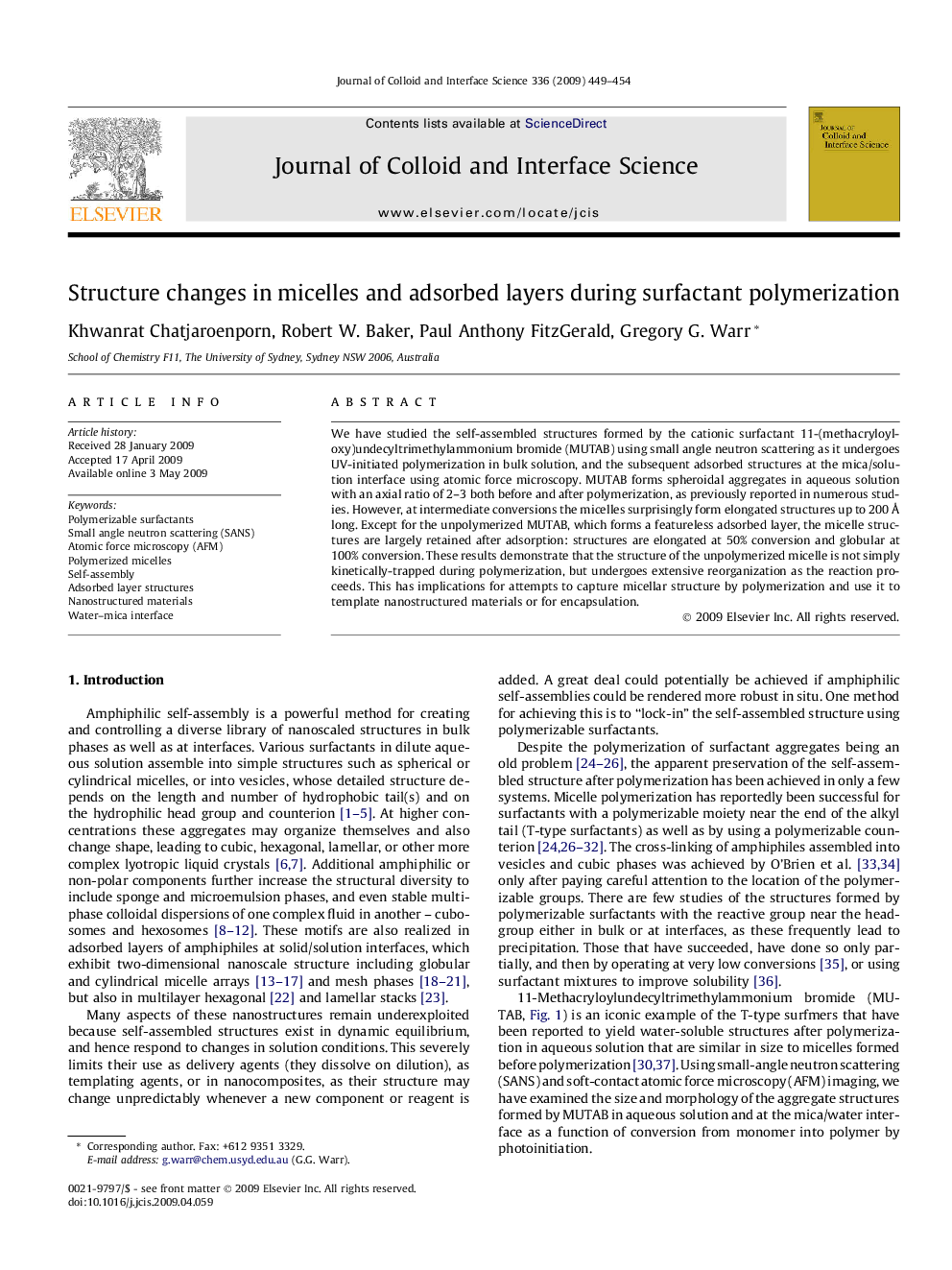| کد مقاله | کد نشریه | سال انتشار | مقاله انگلیسی | نسخه تمام متن |
|---|---|---|---|---|
| 610149 | 880642 | 2009 | 6 صفحه PDF | دانلود رایگان |

We have studied the self-assembled structures formed by the cationic surfactant 11-(methacryloyloxy)undecyltrimethylammonium bromide (MUTAB) using small angle neutron scattering as it undergoes UV-initiated polymerization in bulk solution, and the subsequent adsorbed structures at the mica/solution interface using atomic force microscopy. MUTAB forms spheroidal aggregates in aqueous solution with an axial ratio of 2–3 both before and after polymerization, as previously reported in numerous studies. However, at intermediate conversions the micelles surprisingly form elongated structures up to 200 Å long. Except for the unpolymerized MUTAB, which forms a featureless adsorbed layer, the micelle structures are largely retained after adsorption: structures are elongated at 50% conversion and globular at 100% conversion. These results demonstrate that the structure of the unpolymerized micelle is not simply kinetically-trapped during polymerization, but undergoes extensive reorganization as the reaction proceeds. This has implications for attempts to capture micellar structure by polymerization and use it to template nanostructured materials or for encapsulation.
Micelles formed by T-type polymerisable surfactants undergo extensive structural reorganization during UV-polymerization, visualized in bulk by neutron scattering and on surfaces by atomic force microscopy.Figure optionsDownload as PowerPoint slide
Journal: Journal of Colloid and Interface Science - Volume 336, Issue 2, 15 August 2009, Pages 449–454